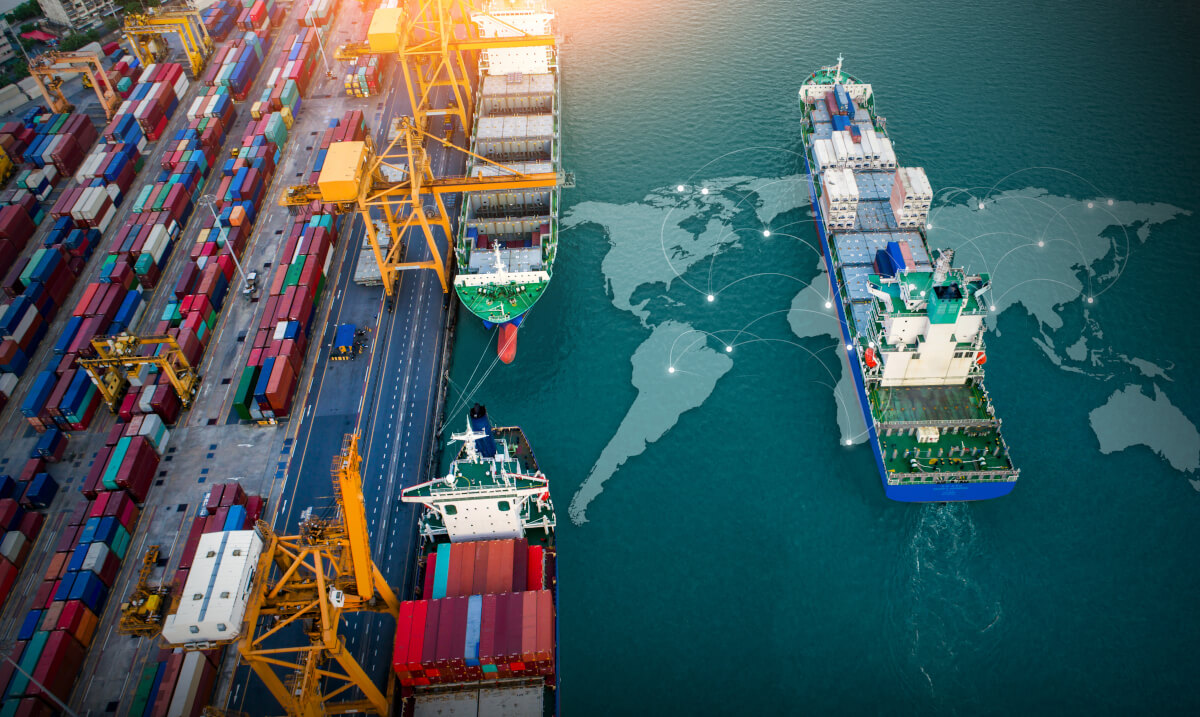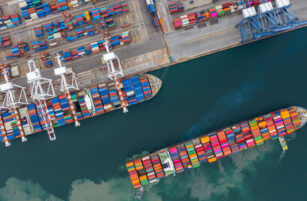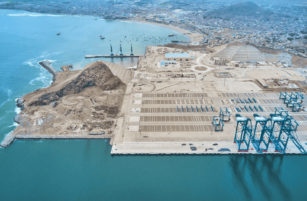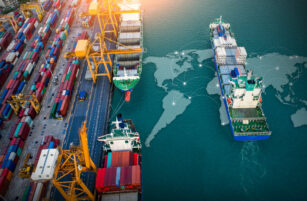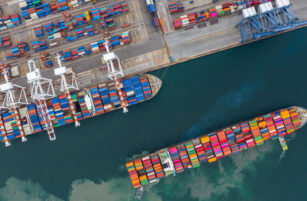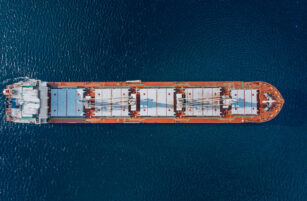Insight Focus
Red Sea-related rerouting has caused container losses and increased piracy risks. Despite these challenges, naval patrols help mitigate security threats. Shipping lines must adapt as they avoid the Red Sea.
Over the past 10 months, shipping lines have been forced to reroute their vessels around the Cape of Good Hope, bypassing the Red Sea area and the Suez Canal due to continuing Houthi attacks.
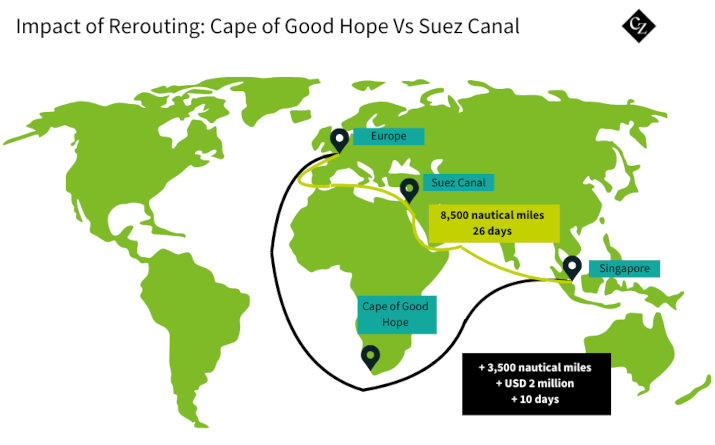
While attempting to navigate one of the shipping industry’s most severe crises, ship owners and operators are now grappling with additional challenges, including significant container losses and heightened security risks for commercial shipping.
Severe Weather Causes Container Losses
The southwest Indian Ocean near Madagascar and the Mozambique Channel generally see the most adverse weather in August-September due to strong winds, storm systems, and rough seas. As a result, adverse weather conditions in the Indian Ocean corridor have already caused significant container losses from three container ships in recent weeks.
In late August, the Liberia-flagged boxship MSC Antonia lost 46 containers and sustained damage to another 305 during an incident approximately 29 nautical miles northeast of Port St. Johns. The vessel was en route from Sri Lanka’s port of Colombo to the port of New York and New Jersey in the US.
This accident followed the mid-August loss of 99 containers by the Malta-flagged CMA CGM Belem, which encountered adverse weather conditions off the coast of Richards Bay, South Africa, resulting in a significant stow collapse.
Earlier, on July 9, CMA CGM Benjamin Franklin, another vessel of the French carrier, lost 44 containers overboard due to heavy seas and strong winds while navigating South Africa’s coastal waters on its westbound voyage from Asia to Europe. In this incident, 30 additional containers were damaged.
These three incidents combined have resulted in the loss of at least 189 containers and the damage of 335 boxes within a span of less than two months.
Security Risk Concerns
According to Dryad Global, a global maritime security management company, the rerouting of commercial shipping, especially container ships, via the Cape of Good Hope has increased the volume of vessels transiting three red zones for maritime security. These lie in the northwestern Indian Ocean in the waters off Somalia, along the coastline of southern Africa, and along the coastline of western Africa.
“Increased shipping traffic typically creates more opportunities for malicious actors operating from these coastal regions to target merchant vessels through illegal boarding, armed robbery, crew kidnapping or vessel hijack,” said Noah Trowbridge, Maritime Risk Analyst at Dryad Global.
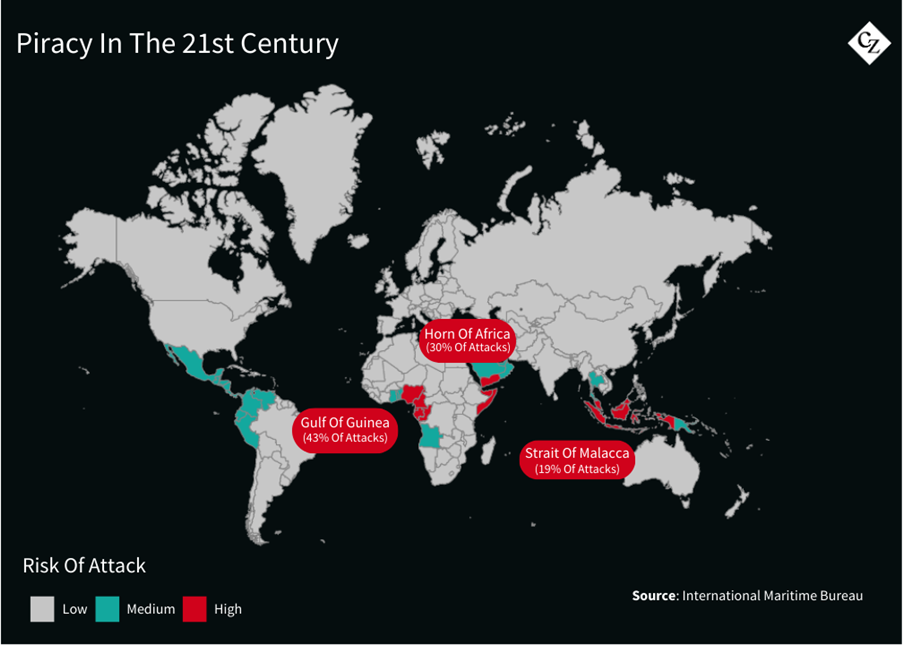
“However, this increased threat does not necessarily translate to an increased risk rating,” he highlighted.
According to the shipping security firm, along the coastline of Western Africa, potential malicious actors are not assessed to have sufficient capabilities, maritime domain awareness or support from corrupt officials to successfully conduct regular offshore attacks on commercial shipping. However, outlier incidents may still occur, such as the armed robbery of M/V Fidan 363 nautical miles south-southwest of Nova Sintra.
Additionally, along the coastline of southwestern Africa, increased port calls at South African ports have caused delays, thus increasing the risk of suspicious approaches and illegal boarding for berthed and anchored vessels, although no such incidents have been reported since 2022.
Furthermore, in the northwestern Indian Ocean, the increased volume of tanker traffic coming from the Persian Gulf in the waters off Somalia offers new hijacking opportunities for Somali pirate action groups (PAGs).
“Fishing dhows hijacked within Somali waters are then typically used as motherships to conduct hijacking operations on low-freeboard vessels further offshore in the new shipping corridor,” noted Trowbridge.
Successful examples include M/V Ruen and M/V Abdullah in December 2023 and March 2024 respectively, reportedly by the same PAG. Payment of a USD 5 million ransom for the liberation of M/V Abdullah signals to PAG that this modus operandi is viable.
But Trowbridge emphasized that the increased patrols of the Indian navy in the region alongside existing multinational forces in the area remains a strong deterrent.
Continuing Houthi Attacks Renew Shipping Challenges
Shipping companies, in their efforts to avoid the challenges posed by the Red Sea crisis, are now facing new obstacles in the Indian Ocean corridor. This serves as further evidence that Houthi terrorism in the Red Sea and Suez Canal has created widespread disruption in the shipping trade, with unpredictable consequences.
It is clear that shipping lines will continue to steer clear of the Houthi-targeted region until the attacks cease. In the meantime, alternatives, like the Cape of Good Hope route, are revealing issues that were previously unforeseen, and ocean carriers will have to learn to adapt to these new challenges.
